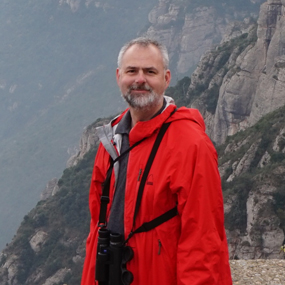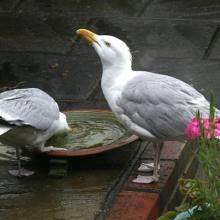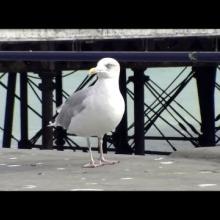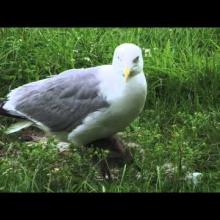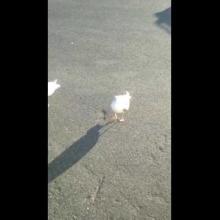

Join BirdNote tomorrow, November 30th!
Illustrator David Sibley and actor H. Jon Benjamin will face off in the bird illustration battle of the century during BirdNote's Year-end Celebration and Auction!
Among the most feared weapons deployed in World War I, submarines sank almost 5,000 ships, sending 15,000 sailors to watery graves. Scientists and navy men worked to come up with a way to detect enemy subs. One thought was to feed wild gulls from a dummy periscope, in the hope that the birds would come to associate submarines with a free meal, and the flock would warn ships of a lurking U-boat. Another plan was to teach gulls to defecate on the periscopes, thus blinding the crews. But sonar research was making great headway, and the Herring Gulls were left in peace.
BirdNote®
Submarine Gulls
Written by Rick Wright
This is BirdNote.
[A few strains from the clarinet motif at the beginning of Sibelius Symphony No. 1 in E minor, Op. 39 - https://www.youtube.com/watch?v=hnZUayjPpo0 ]
A hundred years ago, the submarine was one of the most feared weapons deployed in World War I.
Over the course of the war, these silent prowlers sank almost 5,000 ships, sending 15,000 sailors to watery graves. Scientists and navy men worked desperately to come up with a way to detect enemy subs.
[Quiet Fulmar colony - Macaulay LNS #98867]
One such scheme emerged from the British Board of Invention and Research in 1915. It involved feeding wild gulls from a dummy periscope, in the hope that the birds would come to associate submarines with a free meal. The sight of a wheeling, whirling flock of gulls would warn ships of a U-boat lurking nearby.
It didn’t work, though one admiral tried to salvage the effort by suggesting that the gulls be taught to defecate on the periscopes, thus blinding the submarine crews.
[Quiet phrase from Over There]
When the US entered the war in 1917, the ornithologist R.M. Strong proposed resurrecting the British plan, this time with hand-raised birds from colonies on Lake Michigan. But fortunately for all parties, sonar research was making great headway, and the Herring Gulls of the world were left in peace.
[Loud Herring Gulls - Macaulay LNS #59245]
There’s always more to the story — and photos, too — at BirdNote.org.
I’m Michael Stein.
###
Bird sounds provided by The Macaulay Library of Natural Sounds at the Cornell Lab of Ornithology, Ithaca, New York. Northern Fulmar [98867] by William W.H. Gunn; Herring Gull [59245] by William W.H Gunn.
George M. Cohan, “Over There.” Nora Bayes. On line at firstworldwar.com/audio/overthere.htm.
BirdNote's theme music was composed and played by Nancy Rumbel and John Kessler.
Producer: John Kessler
Executive Producer: Sallie Bodie
© 2017 Tune In to Nature.org May 2017 Narrator: Michael Stein
ID# HERG-02-2017-05-11 HERG-02
http://www.ijnhonline.org/wp-content/uploads/2012/01/article_wilson.pdf


